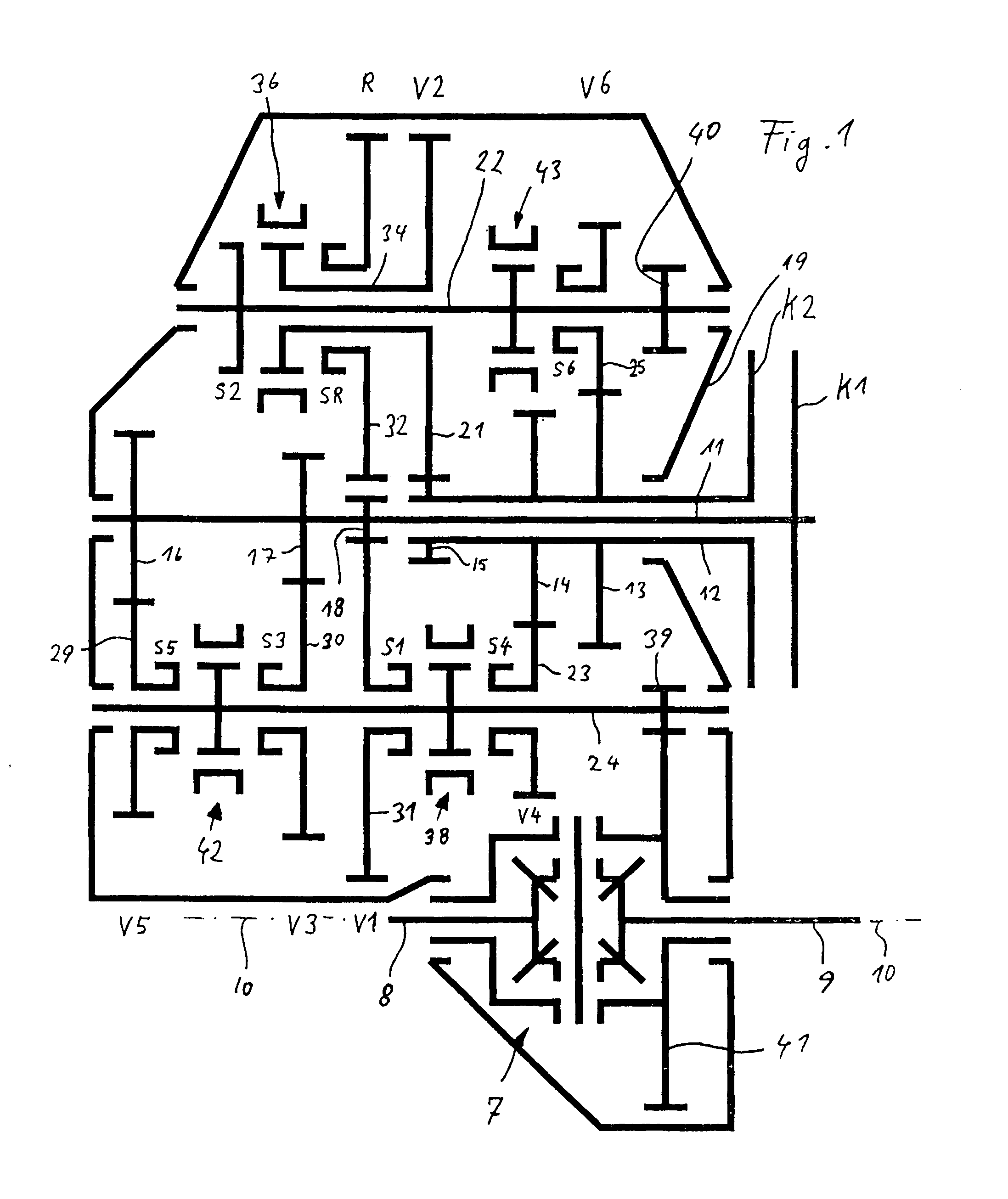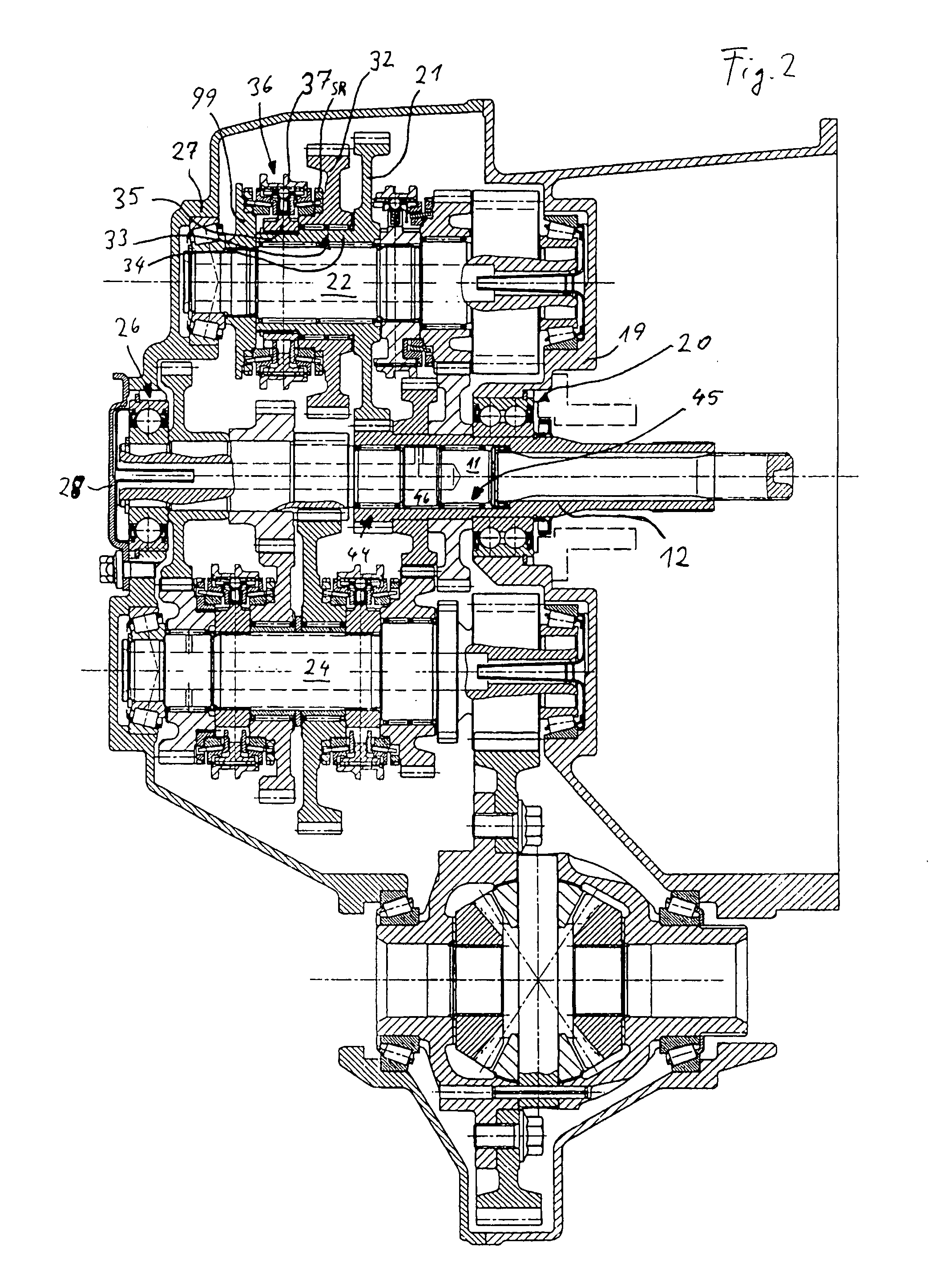Double clutch transmission
a transmission and clutch technology, applied in mechanical actuated clutches, gearing, transportation and packaging, etc., to achieve the effect of preventing rattling of gears and small torqu
- Summary
- Abstract
- Description
- Claims
- Application Information
AI Technical Summary
Benefits of technology
Problems solved by technology
Method used
Image
Examples
Embodiment Construction
[0018] In the following description reference is made to FIG. 1 and FIG. 2 wherein design details however are sometimes shown only in FIG. 2, while FIG. 2 provides for a better overall view of the functional correlations of the various sets of gears. Shown is a double clutch transmission for transverse installation in the front of a motor vehicle. In the plane as shown in the Figs., an internal combustion engine is connected to the right end of the transmission. A differential drive 7 including the wheel drive shaft stubs 8, 9 for driving the front wheel drive axle 10 is shown in the Figs. at the bottom. The transmission shafts are shown for simplification in a single plane that is in the pane of the drawings. In reality, the four main shafts are displaced in parallel spatial relationship relative to one another.
[0019] The double clutch transmission includes two transmission input shafts 11, 12 of which one is a central input shaft 11 and the other is a hollow input shaft 12 throug...
PUM
 Login to View More
Login to View More Abstract
Description
Claims
Application Information
 Login to View More
Login to View More - R&D
- Intellectual Property
- Life Sciences
- Materials
- Tech Scout
- Unparalleled Data Quality
- Higher Quality Content
- 60% Fewer Hallucinations
Browse by: Latest US Patents, China's latest patents, Technical Efficacy Thesaurus, Application Domain, Technology Topic, Popular Technical Reports.
© 2025 PatSnap. All rights reserved.Legal|Privacy policy|Modern Slavery Act Transparency Statement|Sitemap|About US| Contact US: help@patsnap.com



